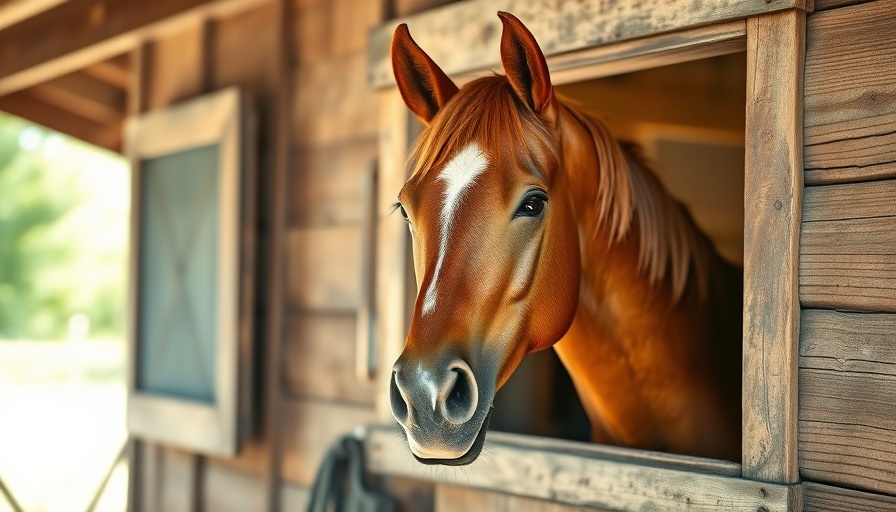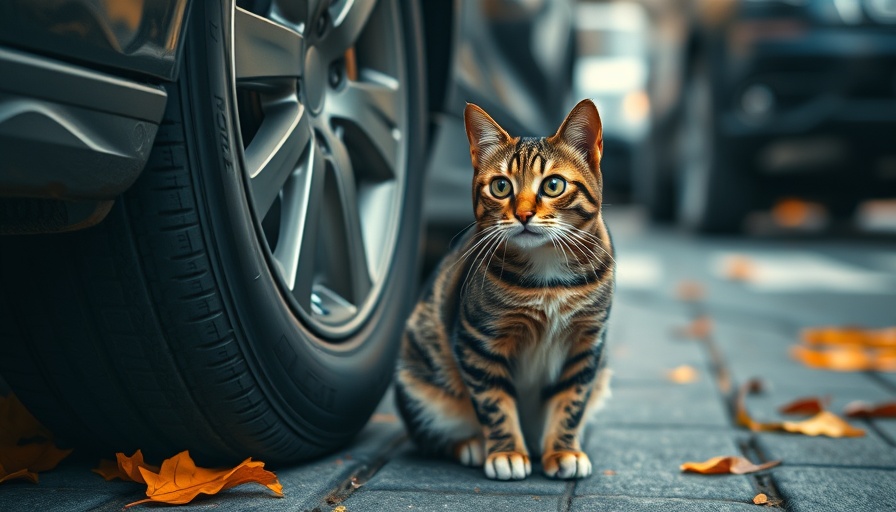
Understanding Equine Viral Arteritis: A Closer Look at Symptoms and Impact
Equine Viral Arteritis (EVA) is more than just a disease; it's a challenge that impacts horse breeders, owners, and the equine community as a whole. Caused by the equine arteritis virus, EVA can present with a spectrum of symptoms, ranging from none at all to severe reactions. While many horses endure the virus with little trouble, it remains vital for owners to be aware of the signs and implications of this serious infection, especially as it pertains to breeding and disease management.
The Silent Threat: Symptoms of EVA
Intriguingly, EVA can often progress unnoticed among those infected. Horses typically show symptoms within 2 to 14 days after infection. During this period, it’s important for owners to observe their horses closely. The clinical signs include:
- Respiratory Symptoms: This can manifest as nasal discharge, coughing, and difficulty breathing.
- Behavioral Changes: Symptoms may range from depression to anorexia (lack of appetite).
- Vision Problems: Eye discharge can indicate underlying issues.
- Changes in Gait: Physical signs can be misinterpreted as minor ailments but can be indicative of EVA.
- Reproductive Issues: Pregnant mares are particularly susceptible, and infections can lead to serious consequences like miscarriages.
The symptomatology is diverse, and a noticeable number of cases may display no symptoms at all, underscoring the importance of routine veterinary check-ups.
Spread and Reporting: Understanding Transmission and Responsibility
EVA is communicable through direct contact, such as respiratory secretions and breeding, or via indirect means like contaminated tack or equipment. This communicability makes it crucial for horse owners to be educated on the disease, not only to protect their own horses but to safeguard others in their community.
In the U.S., EVA is classified as a reportable disease, meaning that veterinarians and horse owners must report any suspected cases to state animal health authorities. This legal obligation exists to strategically manage outbreaks and protect herd health on a wider scale. Awareness and prompt reporting based on observed symptoms can make a significant difference.
The Importance of Vaccination: Prevention is Key
Vaccination against EVA is available and one of the most effective ways to manage this disease. The vaccine can significantly reduce the risk of infection and improve herd immunity. Pregnant mares, in particular, should be vaccinated to protect both themselves and their foals. Owners must consult with experienced veterinarians to determine the best vaccination schedule for their horses, especially considering that certain breeds may have higher susceptibility.
Community Resources: Collaborating for Better Outcomes
Due to the implications of EVA within breeding contexts and equine movements, communities are increasingly turning towards local veterinary services and equine associations for guidance and assistance. Networking and sharing knowledge among horse owners can lead to enhanced awareness, enabling individuals to recognize symptoms sooner and make informed decisions. This communal approach not only benefits individual horse owners but fortifies the integrity of the equestrian community at large.
Future Trends: What Lies Ahead for Equine Health
Looking ahead, the equine industry must remain vigilant in monitoring and addressing EVA through both veterinary intervention and community education. As global travel increases and the breeding industry evolves, careful tracking and management of diseases like EVA will be crucial to maintaining healthy horse populations and minimizing economic losses in the industry. Moreover, ongoing research into equine diseases combined with enhanced veterinary practices can lead to better preventive strategies for current and future challenges.
Conclusion: Stay Informed, Stay Prepared
Equine Viral Arteritis presents a range of challenges for horse owners and breeders, but through awareness, effective communication, and proactive measures, the impact of EVA can be contained. While the disease may often go unnoticed, being in tune with your horse's health and seeking veterinary guidance remains essential. Educate yourself about the symptoms and understand the importance of reporting suspected cases. By working collectively, the equestrian community can foster a healthier environment for all horses.
 Add Row
Add Row  Add
Add 


Write A Comment